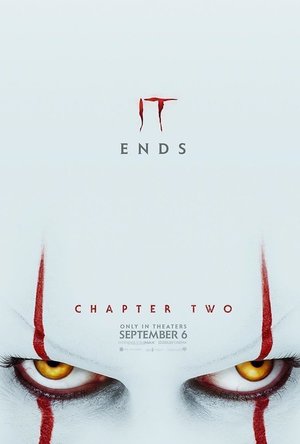
iKiosk ePaper
Magazines & Newspapers and News
App
More than 800 newspapers and magazines on your iPad or iPhone in one single app! Download the...

MoreApp Forms
Business and Productivity
App
Use MoreApp to fill in any business form. No matter if it's a work order, inspection, survey, or any...

Little Nanny Parent - GPS Tracker
Lifestyle and Navigation
App
Little Nanny – a high precision child tracker (GPS) and playground guard. Almost like a real nanny...
Darren (1599 KP) rated It: Chapter Two (2019) in Movies
Sep 13, 2019
Performances – Jessica Chastain and James McAvoy are the two biggest names in the film, they are both fine, because nobody is a true main character, the two could do more and McAvoy is difficult to watch because his choice of accent reminds me about the 10-year-old he plays in Split. Bill Hader and James Ransone are the stars of the returning characters, they still have great chemistry. Isaiah Mustafa and Jay Ryan are both solid enough, though the characters seem to have swapped around.
Story – The story is the second part of the massive book, it follows the adult versions of the losers club that must return to fight Pennywise once again. This is a very long story, it is just under 3 hours long, which does feel like it drags along at times, once problem comes with more flashbacks with hauntings, there is no peril here, because we know the adult versions live. One of the strengths in the film is the idea of being reunited after years away with friends, it does feel natural and just how you would imagine it being. One of the issues I found in the first film was that Ben was the one that spent time learning the history of the town, while Mike did barely anything, it confused me because I always remembered it being Mike that understood the history, here it is Mike and Ben doesn’t seem to care anymore, add in the weird love triangle and you will feel like we have more that didn’t need to be here too.
Horror – The horror side of the film follows the hauntings that both the kids and adults go through, it is more just separate characters getting haunting throughout. Nothing feels as scarier as the first one was.
Settings – The film takes us back to Derry, we do get flashbacks with other moments that make sense and return to the old places where the scares happen.
Special Effects – The effects are brilliant in places, though it does feel certain CGI moments just don’t work.
Scene of the Movie – Richie’s memory.
That Moment That Annoyed Me – James McAvoy’s accent.
Final Thoughts – This is a bogged down horror that just is way too long to get the best out of the scares, just like the mini series, it fizzles out.
Overall: Disappointing sequel.

BTFIT - Personal Trainer
Health & Fitness and Sports
App
BTFIT is your partner in the daily workout routines. Become who you always wanted to be by working...

Calorie, Carb & Fat Counter - Virtuagym Food
Health & Fitness and Food & Drink
App
Virtuagym Food: Helping you to live healthy and feel great. Get a free personalized nutrition plan...

DSLR Camera
Photo & Video and Utilities
App
DSLR Camera for iPhone, iPad, Apple Watch and iMessage the complete app for Photo and Video with...

Photo2Fun HD - 1-click photo montage
Photo & Video
App
Create photo montages, magazine covers, effects, collages, greeting cards, place text labels or...

JusTalk - simple video calling
Social Networking
App
JusTalk is a FREE high-quality video and voice calling app for everyone - simple, reliable, secure...

EA SPORTS™ FIFA 18 Companion
Games
App
Read on for important info below! This app requires you to have an EA Account, FIFA 18 (available...
